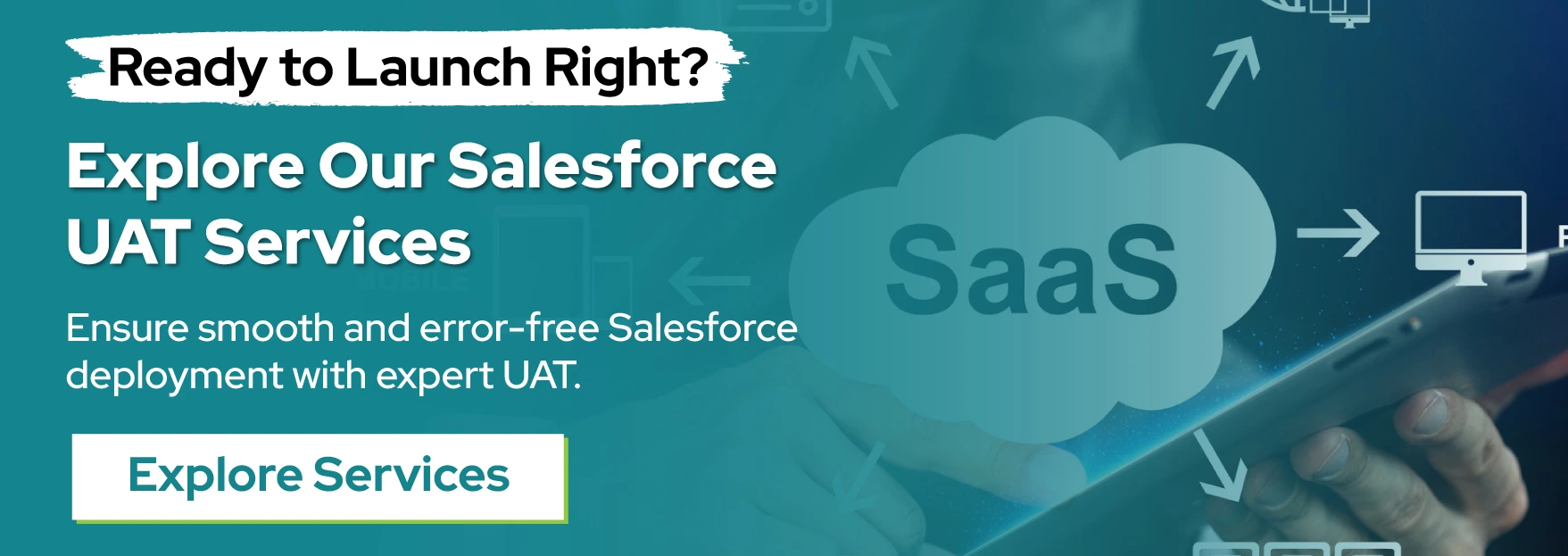Software testing is the reason for successful applications. Over the past few years, test automation has been referred to as the fastest way to achieve SDLC. An effective strategy establishes successful software. Users have a lot of expectations from software, so before releasing software, automation testing is a necessity.
The aim of automation testing is to avoid security breaches and ensure a flawless application. By incorporating effective automated QA services automation, businesses can ensure the delivery of a bug-free app. Some businesses move with manual testing methods because of their cost-effectiveness; however, in a few scenarios, it won’t figure out all the errors like automation testing does.
In the current tech world, businesses are seeking ways to enhance the QA testing process & stay ahead of the competition. Automation testing is necessary because of its efficiency & accuracy. Automation QA Services allows organizations to test software applications faster with better coverage. Identification & resolving bugs would be easier with the automation strategy.
The e-commerce business could use automation testing to measure the functionality and ensure a seamless experience for users. By integrating a test automation strategy, companies can successfully enhance the software quality & drive customer satisfaction. This blog covers the in-depth test automation strategy, which saves time & cost.
Understanding Test Automation
➥ What is Test Automation?
Automation testing covers sophisticated tools & platforms to measure software quality & accessibility. The automation techniques require less human interference than the traditional testing methodologies. The QA automation services include script drafting & executing them thoroughly through an automation program to ensure the performance of the software. By leveraging automated testing methodologies, businesses can achieve quality assurance efforts.
The testing methodologies assist the software team in streamlining repetitive tasks. Additionally, automation testing removes the expenses & time taken in manual testing. The right automation testing approach can turn the overall testing approach at an accelerated pace. Careful automation enables developers to focus on more challenges to drive effectiveness & quality.
When collaborating with automation testers, they guarantee brief testing of products. They leverage automation tools & testing systems to recognize the stringent methodology for successful test automation. Based on a market report, the automation testing market will reach USD 68 billion by 2025. Integrating this into your SDLC can improve accuracy, efficiency, ROI, and cost-saving.
Poor test automation can result in downtime and custom involvement. Instead, strategically defined automation testing steps can be used to avoid tech failures and stay in competition. When you don’t have an automation strategy, you might have a negative impact on the business impression. Predict future risks and reduce them like a pro through automation testing approaches by a QA automation testing company.
Types of Test Automation:
● Functional Testing
Functional testing in software development verifies that the app performs as expected. It matches the business’s unique demands and the organization’s needs. This is a kind of black-box testing where the internal code structure isn’t considered throughout the procedures.
● Regression Testing
Regression testing is the process where the released software is tested to ensure no functionality has been impacted and no modification is required. In this testing, the stability and functionality of features are measured to achieve better software.
● Performance Testing
Performance testing is the methodology that measures how well the app performs under various workloads, data volumes & network conditions. Performance testing aims to detect errors and bugs, enabling better optimization & improved user experience.
Why a Well-Planned Test Automation Strategy Matters?
➥ Time Savings
The automation testing automates repetitive tasks that drive time-saving & resource-saving features. Automated tests drive faster than manual testing methodologies. It doesn’t require any level of human interference, which means the team can focus on repetitive, time-consuming tasks and streamline them.
➥ Cost Efficiency
As we have already mentioned before, test automation can drive the development deadlines & limit the human interventions. It lowers the maintenance expense and delivers long-term cost-saving benefits. Automated test automation is an economical alternative for organizations since it drives productivity and boosts resource allocation. Additionally, it limits the cost of bug fixing through early detection.
➥ Improved Test Coverage
In manual testing, human intervention is required, which results in inconsistent test results. Test automation has the potential to run thousands of test cases in a short time and cover multiple testing platforms, devices & configurations. The mistakes made in manual testing can be removed through the automated scripts and guarantee consistent test settings. Organizations can retain higher test precision for complicated test scenarios through automation.
➥ Enhanced Accuracy and Reliability
Automation testing can cut down on potential errors and lead to improved accuracy. Automated testing can cover a vast range of scenarios & test cases. It drives the overall accuracy of output and hampers quality. Automation testing eliminates human error, improves customer satisfaction & drives consistent test results.
Also Read : User Acceptance Testing for Salesforce: Key Steps to Ensure Successful Deployment
Key Elements of a Well-Planned Test Automation Strategy
It is essential to have a carefully developed automated testing strategy. It will ensure that the automated software testing process is successful. There are a few traits to consider when putting such a plan into practice. Improved test coverage, increased test reliability, a quicker time to market, and a quicker return on investment are a few benefits mentioned above. For an effective software test automation strategy, automation testing services companies need to use the following techniques.
➥ Define Clear Objectives
Planning & strategizing the objective is the first step to designing an automation testing blueprint. Planning a map of testing without a goal can let you end with the worst outcomes. The organization team works on software with the aim of achieving the objectives mentioned by the client. In addition, plan objectives that are achievable. Designing goals is necessary since it enhances testing outcomes, drives accuracy, reduces cost, and diminishes regression period.
➥ Choose the Right Tools
Automation won’t take the role of manual testing anytime soon. Nevertheless, it is impossible to overlook the time savings that automated testing provides. Automation tools have increased as a result of this benefit. So, choose an automated solution that fits your team’s tastes and skill set, the development environment, and your particular product. QA specialists may advise onsite teams to use the newest tools on the market and assist them in selecting the best automation solution. The choice must be based on project and platform needs.
Selecting the right automation tools is a necessity and can only be evaluated when a thorough assessment is carried out for project needs and skills. Aim to select a tool that matches various scenarios. A complete set of automation tools is necessary for a fruitful automated software testing process. When selecting a tool, make sure it is compatible with every platform and fits your current technological frameworks and browser. Here, we discussed tools to prefer for your project-
● Selenium
Selenium is the versatile framework utilized for automating web browsers designed for web apps. It enables developers & testers to automate tasks like regression & functional testing. It supports multiple programming languages.
● JUnit
This popular testing framework of Java is used for automated & unit testing. The companies enable developers to write & run tests to validate the correctness of code and promote test-driven development.
● Cypress
This is the front-end testing tool utilized to automate web apps. It drives developers to write & run tests directly within browsers, delivering features such as debugging, making it a core choice for modern web apps.
➥ Identify Test Cases for Automation
An effective test automation plan requires designing test scripts and test cases. You might have confusion between test scripts and test cases. So, first, understand the difference clearly. A test script is a program that tests specific functionality. Test scripts are mostly the collection of language & commands.
Test cases are referred to as the documentation set, which covers prerequisite conditions, test data value, and the expected set of outcomes to drive automation tests. A separate test case & test cases are a must to move towards software testing. Every test case is designed to test app functionality by addressing the bugs.
The test case covers a few parameters like test case ID, steps, descriptions, and expected results. Always produce a template that can be used in various projects & scenarios. Additionally, it cuts down a considerable amount of effort & time. Prioritize the high-value tests to get effortless outcomes.
➥ Maintain Test Scripts Regularly
This is the final step where maintaining test scripts is necessary for reusing software programs. Additionally, test cases should be regularly examined, with those that are no longer relevant being removed and new ones added to the repository. These procedures guarantee the scripts’ future applicability and effective test automation.
Companies aiming to stay competitive must develop a strategic approach to test automation and integrate modern testing technologies. Organizations must embrace new automation testing techniques and develop an effective plan for automation testing. This enables companies to test software effectively and stay up to date with the ever-evolving market.
The software undergoes frequent updates that change its UI, backend, and functions. Accessing test scripts is necessary to measure the new functionality & existing ones. Craft balanced automation test scripts that are easy & accessible to keep software updates without investing more.
➥ Monitor and Optimize Continuously
This is the most crucial part of the test automation strategy after deciding the goal & choosing automation tools. Ensure the bug reporting is free from any technical issues that include stakeholders & non-technical individuals. It must include test details like the number of tests executed, pending test cases, the type of test run, and learning from it.
The test report must include the debugging data. The review and update section is the most troublesome process. As the leader of the automation testing industry, it’s the duty of testing professionals to track and update test reports and applications all the time based on changing needs. If the client wants to revamp the UI, test script updates with a fresh level of objectives are required.
Best Practices for a Successful Test Automation Strategy
➥ Start with a pilot project
The successful test automation strategy starts with a well-defined scope & clear goals with a pilot project to test the impact of automation. The initial phase assists in identifying challenges, redefining the strategies & scaling up automation efforts. The pilot projects enable you to test tools, methodologies & frameworks in the controlled environment prior to implementation.
➥Prioritize high-risk, repetitive, and critical test cases
Prioritizing risk is the methodology to monitor the major errors that must be considered primarily. Priorities must be set through the chances of risk and its impact. The following testing approaches are based on a principle that monitors & analyzes the potential risks; testers can allocate the resources more effectively and ensure the critical areas receive attention. The approaches help complex systems to deliver reliable & quality software.
➥Regularly review and optimize automated test scripts
Frequent review & optimization of automated test scripts involves a few practices to maintain efficiency and effectiveness over time. It includes updating scripts to reflect app changes, remove coding, & enhance script structure and readability, ultimately leading to faster execution & better test coverage.
Also Read : The Importance of Salesforce Integration Testing for Optimized Business Operations
➥ Combine manual and automated testing for complete coverage
Blending the manual & automated testing approaches is mostly referred to as the Hybrid testing methodology. It delivers comprehensive approaches to software quality assurance. The following method leverages the strengths of both techniques. Automated testing is for repetitive tasks & large-scale regression, whereas manual testing offers expertise in complex scenarios, UI/UX & exploring unexpected issues. The hybrid approaches lead to improved efficiency, coverage & thorough testing procedures.
Conclusion: Ready to Save Time and Costs with Test Automation?
Building the above-discussed test automation strategy can take you to the long run of success. This is the way to execute the reliable, reusable & effective QA process. The test automation strategy is the key to driving quality products. Integrating the well-defined plan is necessary to achieve faster release, cost savings, and broader software quality. By selecting the right tools, businesses can grab maximum ROI. Make sure the testing approach your QA Automation Testing Company follows delivers optimal productivity to avoid common blockage.





